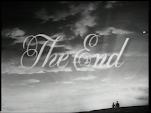
I provide here a link to my first academic article to appear in print, 'What We Don't See, and What We Think it Means: Ellipsis and Occlusion in Rear Window' (The Hitchcock Annual, Vol. 16. New York: Columbia University Press. 2010: pp.77-101). Thank you to the editors of The Hitchcock Annual, Sidney Gottlieb and Richard Allen, for their permission to republish the piece online.
An extract from the article to give a sense of what it's about:
In the line from Rear Window that inspired this essay’s title, Lisa instructs Jeff to “tell me everything you saw, and what you think it means.” David Bordwell has said that this line “concisely reiterates the film’s strategy of supplying sensory information [...] and then forcing Jeff (and us) to interpret it,” and furthermore that, in this sense, “every fiction film does what Rear Window does.” The line is similarly cited by Richard Maltby to help make the point that “when we remember a film we [...] tell ourselves what we saw, and interpret it. The result is a story.” It is easy to see why these words might be alluded to in illustrations of the processes by which we understand film, given that they combine the visual, narrated, and interpretive aspects of filmic storytelling and viewing in a pleasingly economical way. If we are serious about using the line as a metaphor for the spectator’s activity, however, it is worth pointing out that what it does not include is any acknowledgement that what we don’t see in a film also plays a very important role in our sense of what we “think it means”.
.

No comments:
Post a Comment